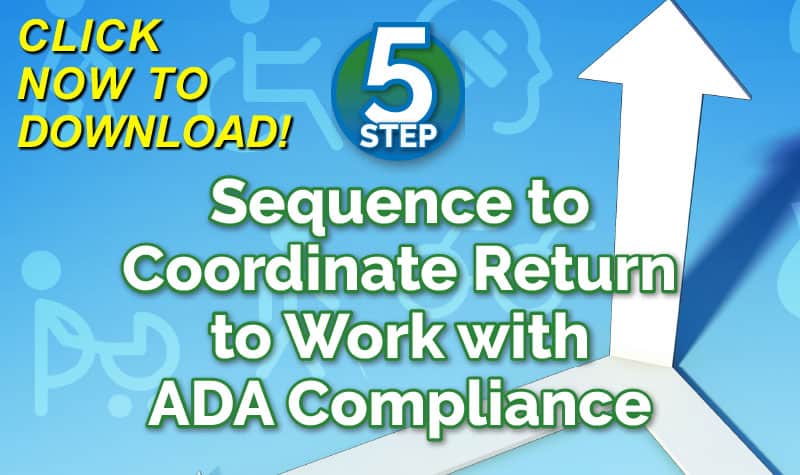Subsequent injury funds, aka second injury funds, are designed to facilitate the hiring of employees who have pre-existing medical disabilities. The state government in approximately 20 states assumes financial responsibility for the cost of a workers’ compensation claim when a partially disabled employee incurs a new injury increasing the level of disability in the employee.
The Subsequent Injury Fund (SIF) process varies by state, but in the typical SIF state, the SIF assumes liability for the cost of the work comp claim over and above what the insurance company would have paid on the claim if the employee did not have a previous medical disability.
A typical example is the potential employee with a 25% permanent partial disability rating to the body as a whole due to a prior back injury. An employer reviewing the potential employee’s prior medical history will be reluctant to hire the potential employee knowing this potential employee has a higher probability of a high permanency rating if injured on the job. If the employer knows the SIF will be responsible for the first 25% of any future disability rating, the employer should (in theory) consider this employee on his work qualifications and not his work comp exposure.
Click Link to Access Free PDF Download
“5-Step Sequence to Coordinate Return-to-Work with ADA Compliance”
To prevent insurers and self-insureds from over utilizing the SIF, most states have fairly stringent guidelines about what type of claim will qualify for SIF payment. Some of the restrictions the SIFs have
- The employee must have a medical certified disability prior to the new work comp injury.
- In some states the prior disability must be from a work comp injury. In other states the prior disability can be from disease, accident or congenital.
- The pre-existing condition limited the employee’s ability to do the job to some extent.
- There must be a merger of the two conditions—the pre-existing disability and the new work comp injury.
- The pre-existing disability and the impairment from the new work comp claim must be greater than the pre-existing disability alone.
- Each SIF will have requirements on when it must be notified of the potential claim against the SIF.
- All the SIFs either required a claim form to be completed or require a hearing before the work comp board before they accept a work claim for SIF payment.
- In the majority of states, the SIFs will accept the claim if the new work comp injury increases the employee’s overall level of disability to some extent. In a few states the second injury must increase the overall disability to the 50% whole body level or other set percentage level.
- Some SIFs require both the prior disability level to be 20% or 25% and the increase in disability from the new work comp claim to be another 20% or 25%.
- Some SIFs will only be liable for indemnity benefits while others SIFs will assume liability for both indemnity and medical benefits.
- Most SIF’s require the insurer or self-insured to have paid a year or two years of indemnity benefits, plus a predetermined dollar amount of medical expense before they become involved.
- Most SIFs reserve the right for an independent medical examination of the employee/claimant if they have any questions about the employee’s medical condition and disabilities.
The SIFs differ in how they process the SIF claims. In some states, the insurer or self-insured continue to process and handle the claims and submits documentation to the SIF for reimbursement. In other states the SIF takes over the complete handling of the claim and deals directly with the employee/claimant.
Second Injury Funds normally pay the permanent partial disability rating for the number of weeks needed to equal the disability rating. In cases of permanent total disability, the SIF will pay the remaining weeks to reach the maximum number of weeks for total disability, or for life in those states that provide lifetime payments for permanent total disability. In a few states where the employee can negotiate a lump-sum settlement for their disability, the SIF will be active in the settlement negotiations.
The funding mechanism for the SIF also varies. In some states the SIF accesses each insurer and self-insured a percentage of the work comp premium they have collected in the previous year. In other states, the assessment is based on the total amount paid in claims by the insurers and self-insureds. A few states assess only the work comp claims that have a permanency award.
If your state has a SIF it would be in your best interest to get acquainted with the details of how it operates. It can be a major source of funding for severe claims where the employee had a prior disability. If you have questions about your SIF, please contact us.
Author R Shafer, J.D. Consultant, Amaxx Risks Solutions, Inc. has worked successfully for 20 years with many industries to reduce Workers’ Compensation costs, including airlines, healthcare, manufacturing, printing/publishing, pharmaceuticals, retail, hospitality and manufacturing. She can be contacted at: RShafer@ReduceYourWorkersComp.com or 860-553-6604.
WC Calculator: http://www.reduceyourworkerscomp.com/calculator.php
Do not use this information without independent verification. All state laws vary. You should consult with your insurance broker or agent about workers’ comp issues.
© 2010 Amaxx Risk Solutions, Inc. All rights reserved under International Copyright Law.










On average, how can the process take? I had the medical exam in July of 2015. I have no idea what is going on. My attorney has had a couple of hearings, I don’t know why or outcome. Other than my attorney is there a way for to get the status of my case?